#legendary witches
Text
Romanian witches: Muma Padurii
(Note: I unfortunately cannot add the accents needed for the writing of those names since my keyboard is not equiped. So know that there are accents missing)
I originally made a post about one Romanian fairytale figure... which turned into a post about two fairytale figures... which became a post about three fairytale figures... So ultimately I decided to split this post into a whole series because it was getting too big. I want to explore with you three characters tied together in Romanian folklore and all present within Romanian fairytales, but each fascinating in their own right. And I want to begin with the first of these ladies... Muma Padurii.
Muma Padurii means "The Forest Mom", or "The Mother of the Forest" (Muma is an archaic form of "mom").
In fairytales, Muma Padurii is an antagonist. She is an embodiment of the wicked witch, or rather of the hag. She is a very old and very ugly woman (so ugly the expression "You look like Muma padurii" is an insult) who lives all alone in a little, dark and scary house in the depths of the woods. She is not a normal woman: she is a witch gifted with various supernatural powers (including shapeshifting), and she is also an ogress who loves to eat children. It is as a children-predator that she usually appears within Romanian fairytales, luring kids to her house to kill and cook them. One of the most famous Muma Padurii fairytales is the Romanian version of "Hansel and Gretel", which mostly differs by A) having the witch named B) the house not being made of candy and C) the genders are reversed (here it is the girl that is to be boiled alive into a soup, while it is the boy that pushes the hag into the oven).
But the thing with Muma Padurii is that, in a similar way to Frau Holle, she is an entity that was "split" between fairytales and legends. There is a Muma Padurii of folktales which is the evil hag I presented above, but there is also a Muma Padurii of beliefs and legends which is quite different and much more neutral.
This Muma Padurii is still an old, ugly, shapeshifting witch - but she is presented as amoral rather than wicked, with a personality mixing a fairy-like mischieviousness and just pure insanity. The name "Muma Padurii" is also very revealing... In the fairytales this name is used in the typical motif of the witch/hag as the "false mother" or "anti-mother", but in the Romanian mythology, this name indicates what Muma Padurii is. She is the Mother of the Forest, as in the spirit of the forest. Her main role, and the reason for her hostility towards humankind, is her function as the guardian of the woods. She still lives in a remote and hidden location - but it is not always a little cabin, it can just be a tree, and it is usually within a virgin-woodland at the heart of the forest, untouched by human hands. She still brews potions - but they are good potions, that she uses to heal injured animals and sick trees. For Muma Padurii always keeps the forest alive. She does attack humans - but only those that destroy the fauna and flora, or that trespass within forbidden areas where only wild things are supposed to be. This was why those that entered the woods were warned to not go too far and to respect what surrounded them: else Muma Padurii would at best scare them away, at worst drive them to insanity with her magic. As such, it was forbidden to pick up certain wild fruits and berries in the forest during certain times of the year - they were for the animals to replenish their strength, and Mama Padurii made sure this rule was followed. In the most extreme cases she would kill the trespassers and devour their corpses like a wild animal - a bogey-version of Muma Padurii that explains her role as a child-eating crone in fairytales...
Muma Padurii is present all across Romania, sometimes in local variations (Padureanca, Muma Huciului), and this explains why there are so many different incarnations of her. Sometimes she is an angry ghost of the woods, a vengeful spirit which can be heard crying among the trees for all the plants that mankind destroyed, and if a house built near the forest isn't carefully locked up at night, she will enter in them at midnight and kill all those inside... Other times she is depicted as a young and beautiful fairy of light, who will be kind and helpful to children but will trick adults into being lost, having their body paralyzed or dying in various ways. This specific idea of the "young faced Muma Padurii" is notably present in another folktale/fairytale, where it is said that the Muma Padurii is a witch that needs to eat human hearts to keep herself young and alive - as such she takes on the appearance of a beautiful woman to lure young men into the woods, but once they are isolated enough she turns into a giant monster and rips their hearts away.
Her link to the forest is highlighted by how she is often said to disguise herself as a tree, to be a part-tree woman, or a hag clothed in moss (she also can appear as a cow, a horse or an ox) ; her function as a "Romanian fairy" is also highlighted by how in various legends she either makes babies sick, or replaces them by changelings (and as such they were several folk-spells and rituals Romanian country-folks used to protect their babies from the Forest-Mom). But mostly Muma Padurii stays an embodiment of the woods in what they have of dangerous and scary. She can be kind and helpful - but only towards the "innocent", animals, plants and (sometimes) children. However she stays an ancient woman of the woods, the mistress of the wild animals, the embodiment of a state of non-civilizations, and as such she is the fright that drives one mad and the savage force that will kill and eat men. And even then, the fauna and flora itself is not always escaping her wrath - some records say that Mama Padurii knows the name of every tree of the forest, but that she can get angry at some and curse them to fall either by the woodsman's axe or by lightning.
The last interesting difference between the fairytale Muma and the legendary Muma is that, while the fairytale Muma is usually a lonely entity, in beliefs Muma Padurii was part of a large family. Sometimes Muma Padurii herself was multiplied into several "Muma" - there was notably a belief about many of them sometimes visiting the cabins of those that lived near the woods, asking to have their hair brushed and cleaned, with a comb and butter (which isn't an easy feat since she had her hair dirty, tangled in snake-like braids and so long it touches the floor). Anyone who agreed to the task and performed it well could receive a wish from the Mother of the Woods - but the rule was that they could only pronounce three words in total as long as she was here, if a fourth was pronounced, she would take your voice and leave you mute. Sometimes Muma Padurii was given a male counterpart of companion called "The Father of the Forests", or the "Woods Papa".
Muma Padurii was also said to have several sons, which were the spirits of the woods and/or of the night (going by names such as Decuseara, Zorila, Murgila, Mamornito or "Midnight"). She is also linked to a set of female forest spirits known as the Fata Padurii (Fata being of course linked to the "fairies", "fées", "fatum" - but here it is to be understood as "The Daughters of the Forest", "The Girls of the Woods, and fittingly they are said to be the daughters of Muma Padurii) ; and to an entity I personaly do not know much about, "Mosul Codruilui" (she is said to be her mother, and "Mosul" means "old woman")
Finally, there was a certain Christianization of the Muma (as some tales started saying her task as a guardian of the forest was given to her by God), and a modern attempt at explaining how she could be such an ambiguous entity, benevolent and malevolent at the same time: most modern storytellers highlight how protective she is of the fauna and flora, and how she was said to wail and cry for the destroyed wood, to explain her "transformation" as her becoming more and more bitter, and angrier and fuller of hate the more humans destroyed her domain, harmed her trees and wounded her "children". A true ecological fable.
Some people point out that Muma Padurii could be a "Romanian equivalent" of the Russian Baba-Yaga which is... not quite exact and not quite true. The two characters seem to derive from a same old "forest mother-goddess" but there are too many differences between Muma Padurii and Baba-Yaga for them to be consideed one and the same. There is however a interesting link between the two, which will be the subject of my next post... about Baba Cloantza.
#romanian folkore#romanian fairytales#romanian witches#romanian mythology#romania#muma padurii#forest goddess#hag#witches of folklore#legendary witches#forest-woman#wild woman#fairytale antagonist#forest mother
21 notes
·
View notes
Text
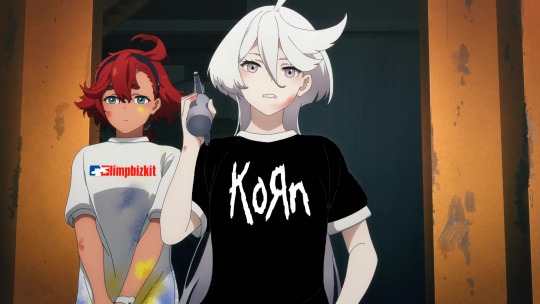
#gundam#g witch#gundam the witch from mercury#suletta mercury#miorine rembran#inspired by discord and that one legendary post#you know the one
4K notes
·
View notes
Text
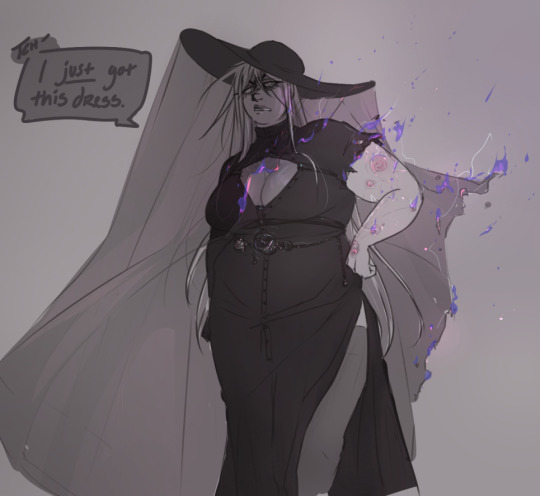
oh, that spell was supposed to hurt?
#my ocs#evangeline#she is a very powerful witch who is full of secrets#im sure whoever cast that attack practiced and practiced for DECADES#and all it did was singe her clothes#(legendary resistance burned) LOL#i just wanted to doodle today! and also my wife came up with the cool hat#big hat with long sheer fabric thats enchanted to protect her...#more another time good night friends!
161 notes
·
View notes
Text
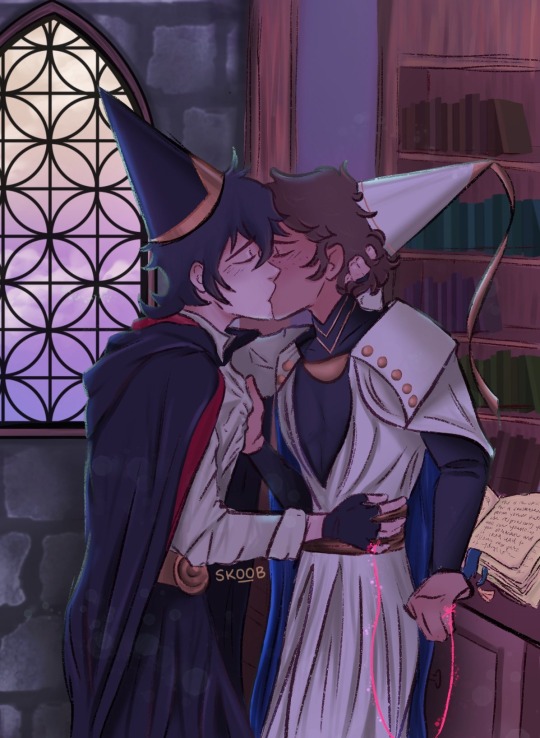
"invisible string"
10K / Red string of fate
Klance Mini-Bang 2023
So happy to work with @viren_writes on Twitter on this on this! Please go check out their amazing writing, here’s my artwork for it, 18+ :)
#klance#vld#keith kogane#voltron#voltron legendary defender#keith voltron#lance mcclain#keith x lance#vld au#lance voltron#witch hat atelier#wha#witch hat atelier au#klance witch hat atelier au#Klance witches#klance mini bang 2023
216 notes
·
View notes
Text

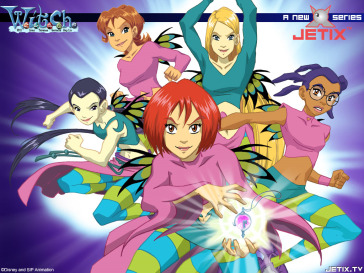

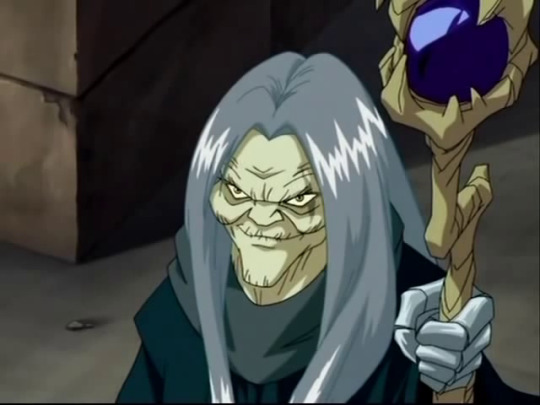



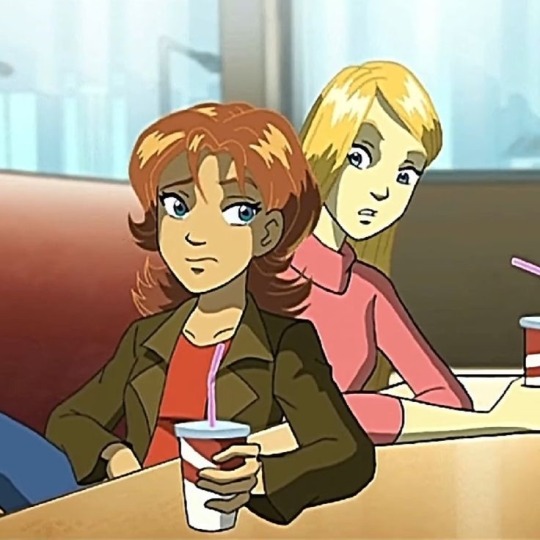
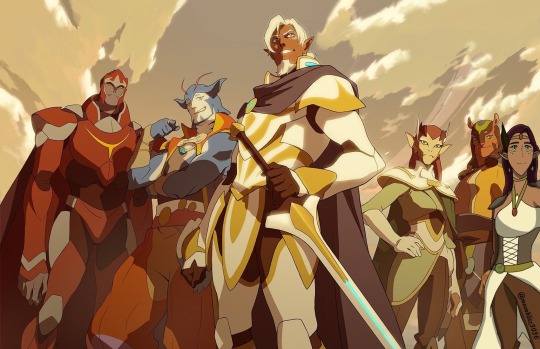



Hear me out…
#finally I found a reason why I got so obsessed with vld#Witch was my favourite childhood animated show#I need a crossover or au now anyone?#Voltron#witch#voltron legendary defender#vld#au#imagine Voltron team in these outfits#w.i.t.c.h.
143 notes
·
View notes
Text



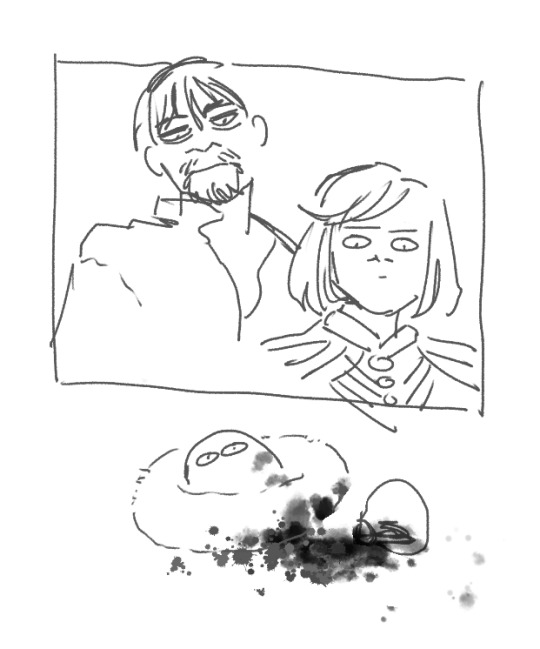
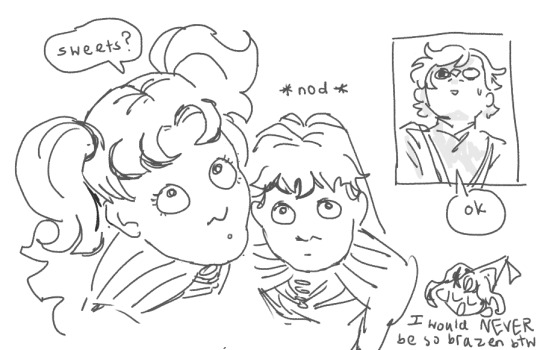


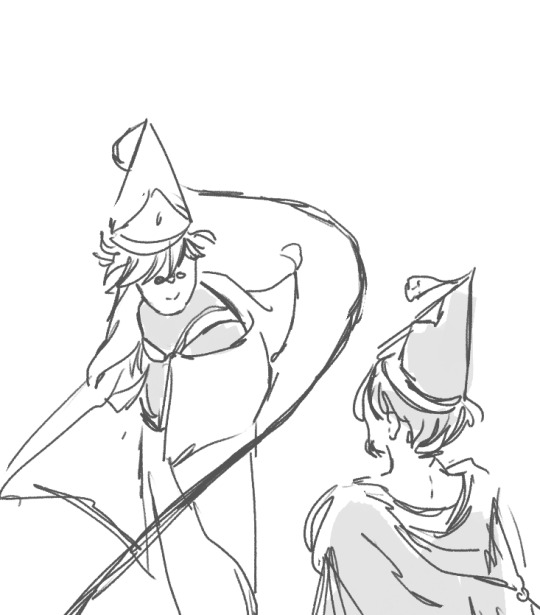


tired
#witch hat tag#orufrey#obsessed with the legendary epic fairytale romance au again#once again they are doomed by orufreycore - oru thinking he has all the time in the world & qifrey neurotic about time running out :')#some merch i'd been waiting months for arrived <3 bookmarks & the little witch hats tin designed by the blue period manga-ka (?!)#might use it to store jewellery in and pretend it's qifrey arranging his gay little apparel
73 notes
·
View notes
Text
Apparently another too-prolific-to-be-legit zine finance mod ghosted a bunch of projects. If you've preordered a fanzine based on FE3H, Genshin Impact, Pandora Hearts, Witch Hat Atelier, Centaurworld, or VLD, check the project's social media to make sure it hasn't been effected.
The mod goes by Cym, with the handle @/kroalias, and it looks like this has been building since at least early August. They currently have 41 zines listed as in-progress on their carrd.
In a really weird "coincidence," this person was also the finance and formatting mod on a Hualian zine that was cancelled early this year? If anyone saw this go down, it was the one that accused a skilled artist of plagiarism and tracing, kicked this artist from the project, and then made a public statement lying about the reason behind the expulsion and asserting that they never made such an accusation at all—after the artist posted screenshots showing exactly what had been said to them when they were expelled from the project. The project was cancelled less than 24 hours after this false statement, with the claim that the mod team had been subjected to too much abuse from the "online mob" to continue.
Interesting.
#fandom bullshit#psa#fanzines#genshin impact#pandora hearts#witch hat atelier#centaurworld#voltron legendary defender
213 notes
·
View notes
Text




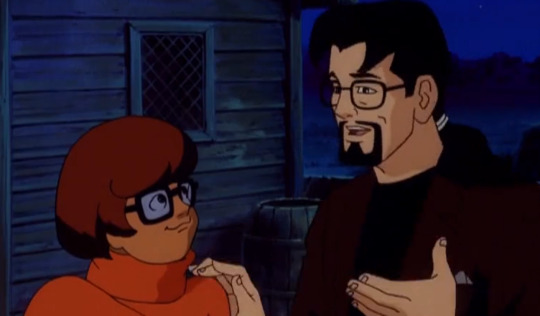

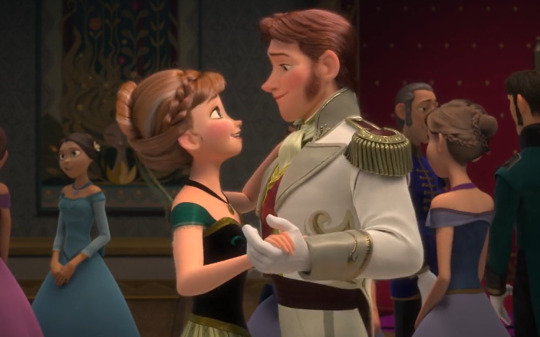





Betrayed by False Loves
#Young Justice#ThunderCats 2011#Scooby Doo and the Witch's Ghost#LoliRock#The Dragon Prince#Tangled The Series#Voltron Legendary Defender#Frozen#Miraculous Ladybug#Gargoyles#My Scene#Teen Titans#Moments
145 notes
·
View notes
Text

Stunning legs of Elizabeth Olsen!
#elizabeth olsen#rocking body#great legs#great thighs#great rack#legs for days#legendary legs#great body#great hips#dancer body#power thighs#lbd#the avengers#scarlett witch
54 notes
·
View notes
Photo

Witch-king of Angmar
Artist: Marko Manev
TCG Player Link
Scryfall Link
EDHREC Link
#mtg#magic the gathering#tcg#$3.97#marko manev#witch-king of angmar#the lord of the rings: tales of middle-earth#legendary#creature#wraith#noble
64 notes
·
View notes
Text
Welcome the newest addition to cookie runs "majestic legendary lesbian" roster



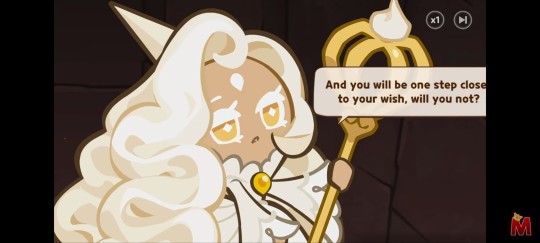

She will fit In nicely with the other majestic legendary lesbians
#the other majestic legendary lesbians are sea fairy#moonlight frostie lotus dragon and black/white pearl incase you were curious#first cream cookie#cookie run#cookie run witches castle
21 notes
·
View notes
Text
Romanian witches: Baba Cloantza
Last time I talked about Muma Padurii, the Forest Mom. And I promised you Baba Cloantza...
The whole idea of the Baba Cloantza is quite fascinating. When I read the article about the Romanian translations of Frau Holle which prompted me to do this series about Romanian witches (I'll talk more about this in the third part of the series), they evoked Baba Cloanta (yes, without the "z") as the traditional wicked witch and child-eating hag of Romanian fairytales. If you do research about Muma Padurii as I did before, you will sometimes find that "Baba Cloanta" can be an alternate name or identity for the Muma, especially in her "creepy wicked witch eating children soup" fairytale self. But if you research Baba Cloanta/Cloantza on her own, most of the time all you'll find is a mention saying "Baba Cloantza is the Romanian name of Baba-Yaga" or "Baba Cloanta is the Romanian equivalent of the famous Russian witch / she is the Carpathian Baba-Yaga".
Now... I do understand why everybody loves Baba Yaga, but I also understand why having Baba Yaga everywhere can be a problem. There is a reasoning behind saying "Baba-Yaga is a character present throughout all Slavic fairytales" and "Baba Yaga is a character of Eastern Europe fairytales"... But this oversimplification can cause a problem when it sweeps under the rug national "cousins" of the Baba Yaga. Again, remember that the Baba Yaga we know today was defined and shaped by Afanassiev's Russian Folktales... It is a specifically Russian character. Yes she does answer to and manifests an archetype present throughout Eastern Europe, and you have several Eastern European manifestations of a local Baba-Yaga... But then you have characters like Baba Cloantza. Who is indeed an equivalent to the Russian Baba Yaga... But she is still her own character, a specific Romanian entity, and saying she is just "Baba Yaga with a different name" can be a quite problematic claim...
So today I invite you to discover Baba Cloantza, a Romanian witch which yes, can be the Romanian translation of "Baba Yaga", but is also an alternate identity of Muma Padurii, as well as her own character with specific roots in Romanian folklore.
For this post I will rely onto an article written in French by Simona Ferent, "Baba Cloantza, la Yaga édentée" (Baba Cloantza, the Toothless Yaga) - it was published as part of a collection of studies and articles around the figure of Baba Yaga for a Sciences and Literature journal (it was called "Baba Yaga en chair et en os", "Baba Yaga in flesh and bone"). I literaly translated the article a long time ago and I do regret doing so because it might have made it quite unreadable... But if you can read French go check it out because it is one of the most complete resources I could find about Baba Cloantza online.
It is also because of this article that I write Baba Cloantza instead of "Cloanta", which Ferent highlighted as a better transliteration of the Romanian Cloanţa.
Baba Cloantza is one of the central witches of Romanian fairytales, and a well-known figure of the Carpathian folklore. But there is already a difference established between her and the Russian Baba-Yaga by her very name. Indeed "Cloantza" means an old woman, an ugly woman... a toothless woman. Hence the name of the article, "the toothless Yaga". Not only does this name evokes as such a toothless hag, it also insists upon her mouth, because "cloantza" is a pejorative name for a mouth. So the Baba Cloantza is a figure associated with the mouth - as much the decrepit toothless hole of an old ugly woman, as the devouring maw of the fairytale monster... and as the mouth from which ancient wisdom and magical secrets comes from. She is the "frightening wisdom", as Ferent says. Because, as a "baba", she is this ambiguous figure between the demon in human shape and the spiritual guide: the baba is the witch and the wise-woman, the isolated and lonely old woman that lives outside of the village, near or into the woods, the one who holds power over love, healing, divination and the weather... As such in fairytales she is the monster to fight and avoid, as much as the magical woman that will help the hero in his fight against a supernatural power, guide a lost traveller, or assist a woman with a tragic love story.
Ferent's article covers a wide range of sources and domains, as a testimony of the Baba Cloantza's huge presence in Romanian culture. The works of Vasile Alecsandri, where she is a prophet, a healer and a demon ; the ones of George Coşbuc where she is a leftover of an ancient Dacian goddess ; the modern, caricatural, buffoon-like depictions of Tudor Arghezi and Gelu Vlaşin ; and finally the great and iconic fairytale collections of Romania, those of Petre Ispirescu and Ion Creange, where the Baba Cloantza is a needed element within the hero's initiation and journey into the world/otherworld...
Given there is a lot of info, I will put this under a cut.
Simona Ferent identifies seven "faces" or seven "aspects" of the figure of the Baba Cloantza.
First, the Cloantza as the "village's oracle". In 1843, Vasile Alecsandri created a poem called "Kraiu-Nou" taking inspiration from the folktales surrounding the Sburător, a night-haunting supernatural entity embodying the "malevolent seduction", a sort of vampire preying upon sleeping women. This works depicts a countryside dominated by the moon - the "Kraiu-Nou" itself corresponds to the first phase of the moon, which is the most effective moment to formulate wishes (especially love wishes). The story describes Zamfira, which is a Romantic incarnation of the "beautiful, virgin, Romanian peasant girl", whi makes her own love wishes to the moon and becomes the prey of the Sburător. In this story, Baba Cloantza appears as a wise-woman who warns the girl of the danger that threatens her. She performs a divination ritual by looking into forty-one grains of corn, and by doing so she tells him she must flee a beautiful stranger with a soft voice (the vampire). [The poem notably opposes the frightful prediction of the baba with the predictions of the "wise men" and elders of the village who said Zamfira would have a happy life] The Cloantza even appears on a sort of mount that later turns out to be the very grave of the vampire... But despite all those warnings, Zamfira follows the eroticism and charms of the mysterious "lover of the shadows", who ends up stealing her life-force... Here Baba Cloantza is still the "old woman at the limit of the village", the physical margin of the community, and her role as an oracle highlights her ambiguity as the one who warns of the danger, but seems to cause it, since her prophecy is self-fulfilling. She is the first to mention the vampire before it appears, and she sits on what seems to be its grave... She tries to scare the girl away from the monster, but the way she describes him makes him appear seducing and conjures up the first fantasies of romance within Zamfira. As such, the baba Cloantza warns the girl of her doom... while throwing her (accidentaly?) in the arms of her killer. (There is also a whole thing to say about how the first crescent of the moon is strongly associated with the manifestation of ghosts and the apparition of malevolent beings ; and how the baba Cloantza embodies here an archetypal fear and archaic warning of sexuality, that the vampire embodies, as the one who preys upon the pure virgin girl...)
Second, the Cloantza as the "healer". In the folk-poem "Burueana de leac" ("the weed that heals"), we have a traditional depiction of the peasant man adressing a prayer/request to the village baba - in this case, we have the story of a man in love in such a desperate way he is ready to curse. The man, overtaken by a desire that strongly looks like a demonic possession (there are motifs of the extinguished sun , and the grave calling for the man), calls for the "mama Ileana", the only one able to "put out the fire" of his heart. The folklorist Alecsdandri explained that "mother Ileana" is another name for the "village baba" - more specifically it is the name of the healer of Romanian villages, who uses both plants and magical words, and bases her craft on the various times of the folk-calendar which mixes Christian celebrations with pagan feasts. This is all the ambiguity of this specific baba. On one side she refers to the Christian religiousness: she uses religious icons, the village's church, she sings in honor of the Virgin Mary or of God... On the other, her rituals are distinctively pagan: she uses flowers and weeds, she carries a supposedly magical water, her incantations are said to be "witchcraft" and she uses wands made of hazel-tree...
Third, the Cloantza as a caricature. The Romanian poets heavily relied on the figure of baba as the "village healer" - Tudor Arghezi depicted in 1948 a baba performing miracles within her village - said to know the spells of love that unite or separate lovers, as well as the remedies for various aches (from tooth-aches to heart-aches). But the portrait he makes of her is a caricature of a witch: she is a hunchback, who heals everybody with "two coal pellets and three lies", and refuses her services to the poor (due to being a greedy woman). This is no mistake that the poet makes "miracle" (minuni) rhyme with "minciuni", "lie". This baba is a scam. If we move to Gelu Vlaşin, we see baba Cloantza as an hallucination, or a psychological projection. The poet is half-drunk half-delirious, he wants to pay prostitutes but is too poor, so he goes looking for the "baba cloantza" so she can cast a "spell of wealth" onto him. And she appears in a middle of a series of very revealing symbols (dwarfs, circuses, prostitutes, spiders), in what the poet ultimately describes as a "fairytale for morons".
Ferent notably studies here a "variation" of the baba Cloantza, called the Baba Hârca. The Baba Hârca is a folktale character, an old witch who lives alone in a cavern within the depths of the woods, because she is afraid of humans, and who typically uses skulls (human or animal) for her magic rituals. "hârca" is a depreciative term for an old woman, an ugly woman or a wicked woman (or all three at once) - but it also means "skull", hence why the witch uses them to perform her spell. In the fairytales collected by Romanian folklorists we see that Baba Cloantza and Baba Hârca often appear as synonymous, in fact the two names can be used alternatively within a same fairytale. And in a Romanian "small-opera" of Romania created in 1848, by Matei Millo and Alexandru Flechtenmacher, it is under this name that the witch appears. "Baba Hârca, a small opera of witchcraft in two acts and three tableaux". Here the Hârca is actually a comical character appearing as a caricature of a gypsy woman, as well as a transvestite role (since the witch is played by Matei Millo himself).
Fourth, the Cloantza as a "ritualistic sorceress". Ferent reminds her reader that most of what we know of the Baba Cloantza has been "degraded" because it went through the literary imagination of a pastoral world disappeared (by authors who sang in a Romantic way the countryside of old), and through the prism of fairytales simplified for children - but she also reminds the reader of how the Romanian folklorists (such as Alecsdandri in his collect of "Cucul si Turturica") tried to identified the older roots of the folk-beliefs and superstitions. For example, in "Cucul si Turturica", the dialogue between the "cucul", the "cuckoo", a mysterious-dangerous bird son of a wicked witch, and the "turturica", the turtledove, the symbol of angelical love, we see a transcription of rural witchcraft. The "baba" preserved throughout the many proverbs of Romanian language is a supernatural entity within the village, a witch tied to the world of the demons. Baba Cloantza is recognized as different from regular human beings, but still accepted within the system of the community - because the witch is the intermediary between the living and the otherworld, and the catalyst of magical rituals. The baba, as the talented healer, "takes the ill upon her" - she is the mouth, as we saw, but the mouth that "sucks up" the evils to expel them in a symbolical way. The ritual is a manifestation of this "devouring" of the bad things, with an insistance on the power within the baba's words. The Cloantza, the "toothless", performs her magical as a ritualistic digestion (at least according to Ferent): she literaly feeds of the fears of the peasants, and uses as a magical "substance" her very words. This is why, while reflecting a distant, archaic form of hedonism and animism, the character of the baba always causes fear and fatalism... Let's return to the dialogue. The cuckoo is a playful, mischievious, jovial spirit who sings his desire and his determination, and will use the not-so-moral means his witch-mother taught him to seduce and have sex with the one he wants. Here, the malevolent influence of the Cloanta in romance becomes the game ; but a game of seduction filled with dangers, as symbolized by the objects the babas use. When a baba must bewitch a young man, she uses the bones of a bat trapped on Christmas Eve and buried alive in an anthill. With these bones, the Cloantza makes a hook to "hook" the heart of the one we want, and a small shovel to keep away those that are unloved.
Most of the powers of the baba seem to be tied to the element of water. The witch uses the water of rivers ; she can control the rain ; she uses holy water to cast spells, or she uses a "virgin water", "untouched water" (a term for enchanted water). Other elements can be used in baba rituals (the hazel-tree wand, the corn grains, the traditional "batic", the scarf around a peasant woman's head), and all they all call forward the society of the countryside, the world of the peasants where any everyday item can be filled with magic. Ferent reminds here of the importance of the communion with nature in the Romanian countryside. The peasant can sing a "doïna", a melancholic song, to his "spirit-brother", which can be a tree, a flower, a bird, an animal or the entire forest. All sorts of magical beings fill the countryside, such as the ielele (the "sirens of the woods") that inhabit hills and mountains. And if a young man is not careful when walking among the plains or choosing his travel-staff... he might get bewitched by the voice of a Cloantza, wandering forever, or snatched away in the sky "like an arrow flying". Only a knife stuck into the ground can break the spell of wandering.... Ferent also heavily insists upon the importance of recitation in spells: the baba always uses the "descântec", a form of invocation whose name means "a word, sung or recited, which can bewitch or break a spell". We have preserved a lot of these incantations, which were created for many various situations - there was a spell to heal snake-bites, there was another for people who feared to be alone... Or rather the fear of the "urât", a term quite difficult to translate, which literaly means "ugly", but explains a form of anguish towards the idea of being abandoned, mixed to a fear of the "other". Ferent proposes the idea of being "alone in a haunted house": that's the urât. To return to Baba Cloantza: she embodies all of the traits that were given to the village witch. Like them, she was here to offer magical solutions and answers to the very real needs and fears of the peasants.
Fifth, the Cloantza as the "shapeshifting female". The baba is also a manifestation of the archetype of the "Dreaded Mother" and the "Witch-Goddess" (or "Dreaded Goddess/Witch Mother ; or Mother Goddess and Dreaded Witch, however you like to arrange things). [Ferent highlights how there's always a multi-faced archetype of the "female", such as how the witch at the same time recalls ancient figures of priestesses or women initiated to the secrets of nature, and mythological characters such as Gaia, Maia, Circe, Demeter, Isis or Lilith]. The baba Cloantza is what happens when the "supreme female principle" becomes uncanny. For example, a recurring element in folk-mythology is that the baba can give birth to extraordinary physical beings. George Cosbuc, in "Atque nos!", reminds how the baba is the mother of a young man who was said to grow "in one year as much as others did in ten". George Cosbuc notably wrote texts celebrating the "magico-religious alchemy" that give birth in Romania to a rich gallery of female mythical beings: the baba Dochia (with probably Dacian origins), the Mama-Noptii (Mother of Night) surrounded by vampire-being, as well as the female Saints Tuesday, Friday, Wednesday and Thursday (described as pagan phantasm born of a Christianization of the deities of the Greco-Roman pantheon that were Mars, Zeus, Venus and Mercury). In fairytales, the baba usually appears as the embodiment of a wild elemental power.
The writer Ion Creangă, in the famous fairytale "Povestea porcului" (The tale of the pig), fragments the "baba" in three steps. First, she is the elderly peasant-woman who, despaired by her own sterility, adopts a pig she raises as a son (and will turn out to be a Prince Charming under a curse). Second, she is the Three Saints (Saint Wednesday, Saint Friday and Saint Sunday), three witches that will guide the heroine in her initiation-journey to find back her husband (the pig/prince she lost by throwing his pig-skin/pig-disguise into the fire). In a third time, the baba is "baba Cloantza the Toothless", the hag that keeps the prince her prisoner with malevolent powers. The pig-prince-hero not only will manage to outwit the Cloantza and find back his beloved, he will also free her from the spell that prevented her from givng birth (a four-year spell!). This story is haunted by the idea of the "cursed procreation", declined in three aspects. 1) the sterility of the old woman 2) the spell that prevents the heroine from giving birth to the child she is pregnant with 3) the idea of giving birth to a demon. When the pregnant heroine travels to the baba Cloantza's domain, she goes through a hellish-landscape filled with dragons and 24-headed otters, but especially in a world ruled by greed, cunning and wickedness. Here the wicked witch is formed as the antithesis of the naive young princess. The fairytale calls baba Cloantza "Hârca" (the name is invoked when the narration insists upon her old age, her crooked mind, and ugliness), but it also gives her the name Talpa Iadului (The Mole of the Devil). And the Mole of the Devil is actually one of the most evil beings of Romanian mythology, because it was believed to be the mother of all the demons, and renowned for its intelligence and treacherous nature. In the end of the fairytale, the Toothless baba/Skull/Mole of the Devil ends up punished by being tied to the tail of a horse - bringing back the comical and extravagant tone that opened the fairytale, and prevents it from falling into too much darkness.
But this structure of the youngest daughter of a king undergoing an initiation journey can be found in many fairytales. Petre Ispirescu, a great fan of Romanian folklore, published in 1676 "Porcul cel Fermecat" (The bewitched pig), a story that his own mother had told him, and that reuses the antithesis of the Baba Cloantza (here, a mother of dragons) with a young women (who discovers against her will the magical powers and the devious tricks of the witch). In this fairytale, the baba embodies a trial of Fate that the heroine must overcome to reach happiness (symbolized by a wedding out of love). The story tells the story of the youngest daughter of a king who, following her two older sisters, enters a room of the castle his father had forbidden her to go into. The princesses discover there an oracle-book which predicts royal weddings for the older sisters, a wedding with a pig for the third. The prophecy will come true and the princess is forced to leave her house to follow a pig, with a human voice so beautiful everybody suspects a spell is at work. The princess comes to love her strange husband, who removes his pig skin every night to become a man, but right as she was getting used to her new life she meets baba Cloantza who tells her she can break the spell by tying up her husband to the bed with a magical rope. Trusting the hag, the young bride uses the rope, but it breaks and her husband disappears - but not without telling her that, had she not obeyed the witch, he would have been set free from his curse in three days. The young wife, her newborn child in her arms, undergoes a quest to find her husband. Throughout hostile lands she obtains the advice and gifts of 1) the Moon and her sisters 2) the mother of the Sun and 3) the mother of the Wind. Arriving at the house of the cursed prince, the girl proves her intelligence and determination by making a ladder out of the magical chicken bones the three supernatural women gave her, and even cuts her own little finger to complete it. When she finds back her husband, he reveals her the full truth, and how his curse was caused by the Cloantza, because he had killed a dragon that was the baba's son. As we can see with all those stories, the idea is the same: to obtain her happy end and eternal bliss, the young woman must journey through a desert that symbolizes a journey outside of the real world ; the strange journey always begins with the girl breaking the law imposed by the father, and each time the baba Cloantza appears as the embodiment of the crime the girl must expiate/the evil she must vanquish.
Petre Ispirescu also depicted the baba Cloantza as the mother of a dragon in another fairytale, where the prince must kill it to free an enslaved princess. In this fairytale called "Poveste Taraneasca", "Peasant tale", the character of the Cloantza lives within a hellish world, with her courtyard surrounded by impaled human heads. In this tale, the Cloantza shows a trait that makes her close to the vodou sorcerers: she gains her strength and her immortality by swallowing, or rather "drinking", spirits that she keeps locked up in a barrel. By extension, we see that in this tale, the main threat of the story are the various vampires that live within her domain, and who try to steal away the soul of the old king.
Sixth, the Cloantza as the "devilish witch". An old proverb of Romania recalled by Alecsandri says "Baba-i calul dracului". Literaly "the Baba is the horse of the devil". Literary: "Old witch, bearer of Satan!". This proverb notably opens a poem of Alescandri called "Baba Cloantza" and written in 1842 - a folklore-inspired work that Alecsandri considered one of his best improvisations. In this text, the baba is reconstructed in the style of a Shakespearian witch. The Cloantza appears mad with lust for a beautiful young boy. The poem drifts into an infernal rural night, where malevolent ghosts fill the night-clouds, and snakes slither among the flowers of bewitched ponds. In this perverse Eden, under a "pale and blond moon", the Cloantza invokes several demons while threatening the young man with the worst torments if he ever resists to her charms. However, when the demons fail to perform their deed, the old Cloantza uses Satan himself, and offers him her soul without thinking about the consequences. The deal with the devil makes her act in a way that recalls a possession or insanity (running around, jumping, flying in the sky, screaming exorcism rituals). The "mad Kloantza", surrounded by the "thousand infernal spirits", fails to notice the laugh in the woods that announces her doom. Right as she arrives "two steps" away from her beloved, the Cloantaza's dream becomes a nightmare: the rooster's chant wakes up the village-folks, the ghosts of the night fade away, and we conclude on an aquatic final scene: Satan snatches his prey, the baba, and the two jump away into the depths of the pond... Nature returns to a seren and calm state, but the danger is not gone, because the poem adds that a "melancholic voice" can still be heard by the pond, calling and seducing the men that walk near it late in the evening, promising them to protect them "by my exorcisms of the evil eye, of cruel fate and snake bites." Critics have pointed out a dual reading of the poem. On one side, it is the epic depictions of an unhealthy love, the inappropriate passion of an elderly woman for a woman, doubled by the fairytale figures of the wicked witch in love with the Prince Charming ; on the other side, there is an humoristic reading of the poem as a display of petty feuds, vain quarrels annoying demands and bothersome requests. As such, the baba's original duality returns: a devilish character, and a spirit of mischief.
Seventh, the Cloantza as "the avatar of Death". In a very old folk-song of Romania, "Holera" (Cholera, collected by Alecsandri in 1853), the Cloantza appears with the imagery of the Roman Furies, with snakes in her hair. We find back around the witch another syncretism of Christianity and paganism, mixing the Furies of Ancient Rome with the vengeful angels of the Bible: wild hair, a dry skin, a "venomous" body, a sword of fire in one hand... Here, the Cloantza is the embodiment of death. More precisely, she represents the deadly disease of the cholera that appears on the path of the carefree and joyful young man Vâlcu. No negociation is possible: the Cloantza is a Grim Reaper. In fact, in the song she is exclusively referred to as "cloantza", the term "baba" disappears, removing any form of humanity.
In conclusion, Baba Cloantza throughout the Romanian folktales is a multi-faced, multi-voiced entity. She is the baba that heals or mutilates, she is the old woman that makes people cry or laugh. She is an oracle who sometimes has to work to make sure her prophecies come true. And Ferent concludes that somehow, the baba Cloantza acts as a double of the storyteller itself, as an entity that represents the "power of fiction". Because one of the main powers of the Cloantza is to turn the fears and anxieties of those that seek her into prophecies - aka into tales that will orientate the person's mind towards the future and force them to think about their own role in the world. The storyteller lacks a "real" power, and as such is as "toothless" as the Cloantza, but they still are the owner of a form of magic - a magic of illusions that can nourish or poison. As such, when the storyteller describes the baba, somehow they are describing themselves, presenting their own self within their fictional world. And as such, the baba kept evolving and changing throughout the centuries, going from a mystical therapeutic character in ancient days to a subversive but harmless entity in contemporary fiction.
#romanian mythology#romanian fairytales#romanian folklore#baba cloanta#baba cloantza#romanian legends#romanian literature#romanian witches#legendary witches#fairytale witches#baba yaga#witch
18 notes
·
View notes
Text
sometimes think about how in a tcwg pokemon au lime would be the champion and mochi would be the professor
#secret beast professor#in training anyway#started on their journey as rivals where limes goal was the championship and mochis was the pokedex#and she accidentally became hella strong#mochi is definately a fairy type person but for lime im actually not sure anymore#electric or steel?#(for the thunderbat and m34th respectively?)#plus steel -> fairy is very on brand for tcwg mechanics#any pokemon au would honestly probably require me to make my own legendaries for the witches#dragon type legendaries......dragon/fairy...#honestly something like type null would be lowkey fitting for lime
24 notes
·
View notes
Text
You know Twitter was talking about something, namely that with this update we’re could be getting yet another Legendary group

I’ve been told that they aren’t, and these are just the Epics to come with the update, but that’s not the point I’m making
The point is that I’m noticing just how many new Legendary/premium tier groups there have been. Just in 2024 alone, we got the Novas in Ovenbreak, the Beasts in Kingdom, and then the Archons/First Cream’s group in Witch’s Castle. That’s 3 groups and we’re not even halfway through the year
On some level it feels like they keep trying to give us new big things to be excited about, while not delivering on their already made promises, such as bringing in the Ovenbreak Legendaries, which they teased in late 2022 and we’ve only gotten one new one so far (not counting Pitaya)
It’s like me coming up with a new idea every couple of days and abandoning previous ideas I said I was going to work on, especially with AUs. Except I’m not a company with millions of players, I’m one scatterbrained, ADHD riddled person. So following my example is a very bad idea
I mean maybe let some new Legendaries just be one offs, like Xylitol Nova and just let it be one space themed update, or maybe First Cream (though I don’t know enough about her yet to say). The Beasts can stay, they work as a group since they’re basically evil Ancients/the original holder of the Soul Jams, though maybe they should have come after the White Lily chapter, and have Beast Yeast come after her story, after all the Ancients are recruited, instead of jamming in new hooks and shuffling the actual focus to the background
Like at this point I’m getting concerned about this company, since these releases feel like short term getting your money for promise of future updates while neglecting the hooks already set up (like the Dragons or Dark Enchantress (especially Dark Enchantress)), and it’s not gonna go well in the long run. Granted I’m not knowledgeable in how businesses work so what do I know?
I mean personally I just want closure to arcs that have been set up, as well as possibly seeing my old favorites again, I don’t really care that much about the company itself, I don’t even pay money. It’s just that they make the stories that I like and want to see more of
#I am excited for this new update#I just have thoughts about how Devsis has been operating recently#and tbh I wonder if part of it has to do with all the new spin-offs and projects#because I feel like at some point this is gonna be a problem#maintaining 2 games seems manageable enough#but now there’s a 3rd one with a 4th on the way#not to mention Brixity or the other Cookie Run spin off things (though granted those are other media)#or how they were going to make a 5th game with Ovensmash but have to shelve it bc there’s no one to work on it#like it feels like maybe the company is spreading itself out too far too fast#and in turn the current games are suffering#but again I don’t know business so I don’t know if this is the case#but still#cookie run#cookie run kingdom#cookie run ovenbreak#cookie run witch’s castle#legendary cookies
13 notes
·
View notes
Text

inspired by two things today as i attempt to beat my art block! the concept of my dear witchy lance mcclain brought to you by @autisticlancemcclain ‘s fic, He’s into superstitions (black cats and voodoo dolls), which i haven’t been able to remove from my skull. The hat design is by HigginsCreek on Etsy which i’ve been obsessed with since i saw it on pinterest!
#voltron#voltron legendary defender#voltron fanart#vld#vld fanart#lance mcclain#vld lance#lance voltron#lance vld#lance vld fanart#lance voltron fanart#voltron lance#witch!lance#witch lance
81 notes
·
View notes
Photo

The Sun. Art by Stone&Co.69, from The Legendary Witch Tarot.
194 notes
·
View notes